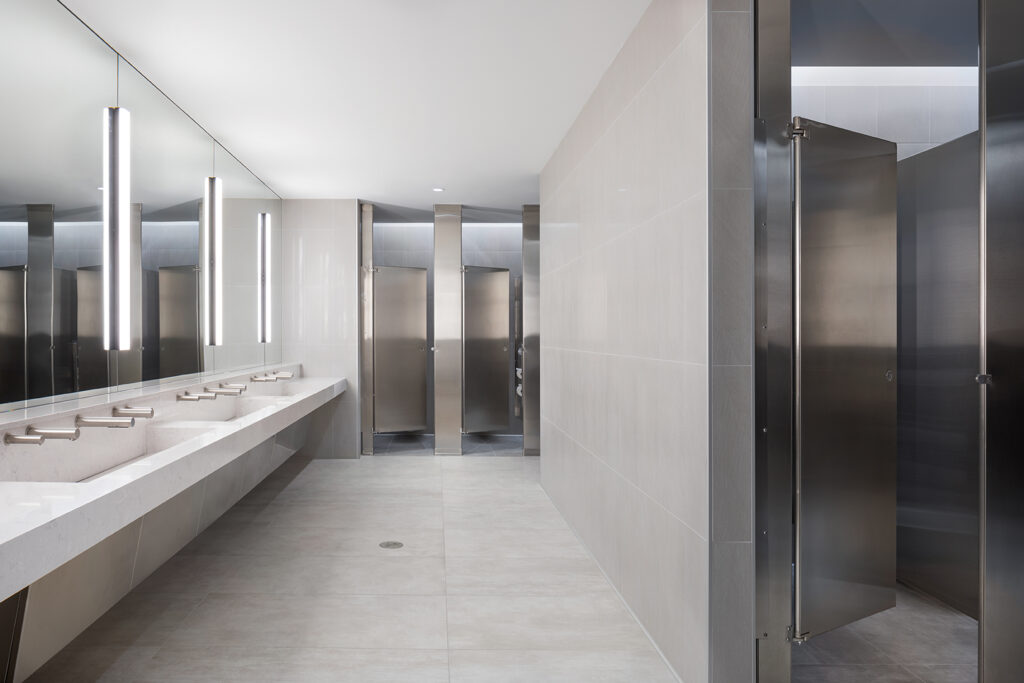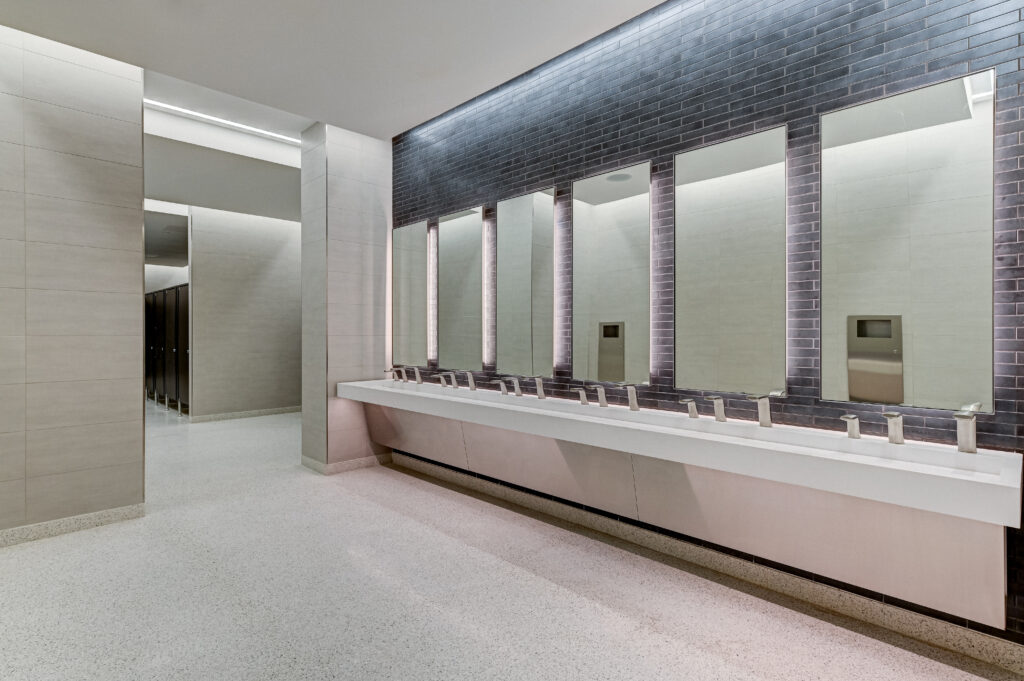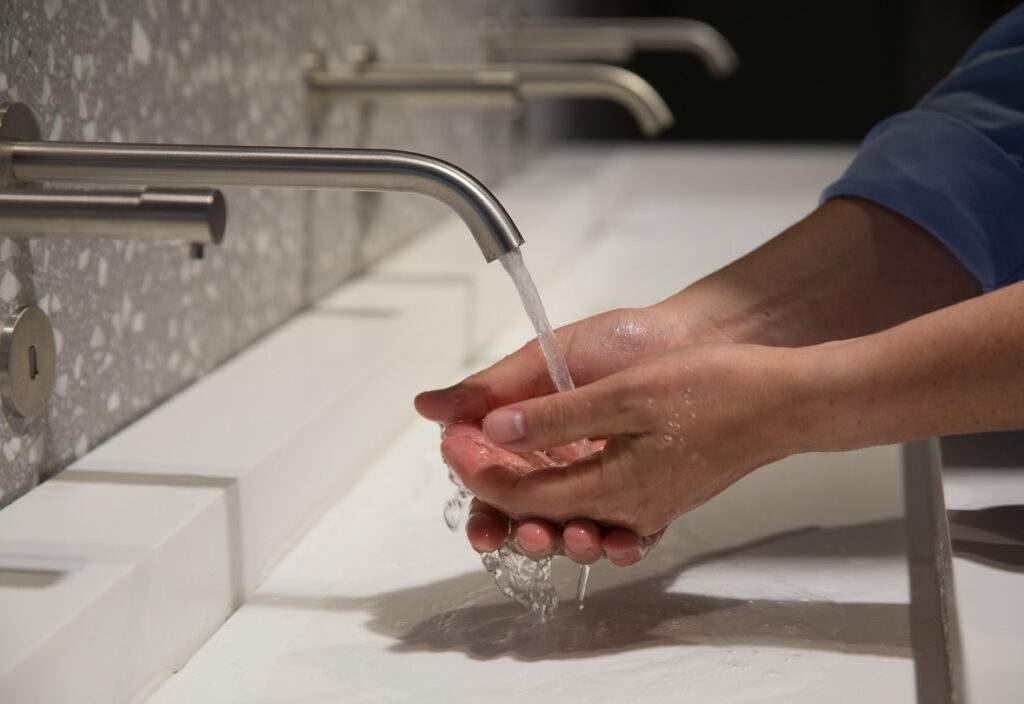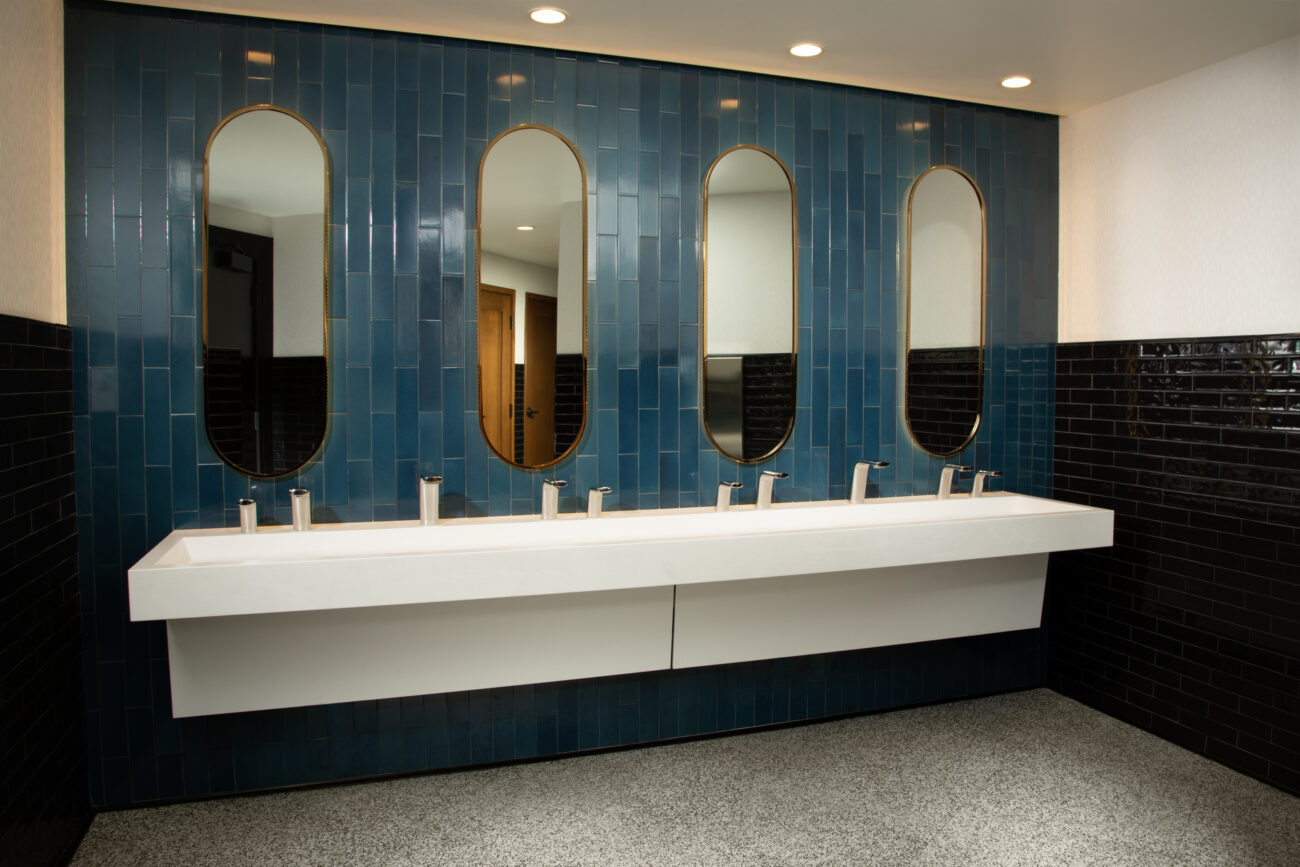Are you a business owner? Perhaps you are a property manager? Or, let’s take a step further—you may be an interior designer or architect. But what do all of these professionals have in common? It’s simple. Each and every one of these people has the goal of creating a restroom design that is safe, comfortable, and accessible for everyone.
But what goes into ensuring compliance and quality in restroom specifications? Is there really more to it than providing some toilets in a private space, some sinks, and some soap and towel dispensers? Yes, there is, and though creating an accessible space isn’t all that complicated, there is a bit more to it than many people realize.
In this article, The Splash Lab will introduce you to the concept of restroom compliance in commercial and public spaces. By the time you get to the end of this article, you’ll know what you need to do to create a compliant space that checks all the boxes and looks great, too.
One of the biggest challenges with restroom specifications is space. To be ADA compliant, you need more space than you might otherwise. You need room for wheelchairs to maneuver, not just in the toilet stalls but also to get into the bathroom, access the sink, and easily access soap and towel dispensers.
But, this doesn’t mean you have to jeopardize a great-looking restroom with a modern design that aligns with the building’s overall look and feel—quite the contrary.
It just means that balancing design flexibility with compliance requirements involves thoughtful planning. It’s possible to create a restroom that both meets ADA standards and offers a sleek, modern design. By carefully choosing compact fixtures, strategically placing elements, and utilizing creative layouts, you can maintain a visually-pleasing space while adhering to regulations.
When retrofitting existing spaces, the challenge lies in updating older designs to meet new codes. This often requires adjusting floor plans, expanding stalls, or relocating sinks and dispensers. Working with experienced designers, contractors, and even suppliers such as TSL can help you overcome these obstacles while maintaining both function and style in the space.
 We also know that every space is different, so our modular systems and custom solutions are valuable. They allow flexibility in design, making it easier to meet complex specifications without sacrificing the overall appearance.
We also know that every space is different, so our modular systems and custom solutions are valuable. They allow flexibility in design, making it easier to meet complex specifications without sacrificing the overall appearance.
 Plus, at The Splash Lab, we stay up to date on evolving restroom standards and regulations. This provides us with the unique opportunity to educate not just architects and designers who are kicking off—or retrofitting a project—but consumers, too, who want to know what to expect when visiting public spaces.
Plus, at The Splash Lab, we stay up to date on evolving restroom standards and regulations. This provides us with the unique opportunity to educate not just architects and designers who are kicking off—or retrofitting a project—but consumers, too, who want to know what to expect when visiting public spaces.
Understanding Restroom Compliance
Just what does it mean to be ADA-compliant when it comes to restrooms? It all starts with space, layout, and technology that creates ease and accessibility for people with all needs to use the restroom safely, comfortably, and with dignity. And yes, while ADA compliance is where it all starts, there is more to it than that. Architects and designers need to consider key compliance standards such as LEED, UPC, and IPC. Here’s what to know about each.- ADA (Americans with Disabilities Act): Requires restrooms to be accessible for all users, including those with disabilities, by providing features like grab bars, wide doors, and sufficient space for wheelchair mobility.
- LEED (Leadership in Energy and Environmental Design): Focuses on sustainable restroom design through water-saving fixtures, eco-friendly materials, and energy-efficient technology, helping reduce environmental impact and support green building practices.
- UPC (Uniform Plumbing Code): Sets standards for safe and functional plumbing systems, ensuring restrooms have properly installed pipes, fixtures, and drainage to prevent leaks, backups, and health risks.
- IPC (International Plumbing Code): Establishes global plumbing standards, prioritizing water conservation, proper ventilation, and sanitary waste disposal to maintain efficient and safe restroom designs worldwide.
Key Considerations in Restroom Specifications
Creating an accessible public restroom space isn’t just about making sure a wheelchair can get in and out. Though space is a key consideration, it’s really the entire experience that needs to be top of mind. Consider these critical components that go into creating a restroom space that can be used by anyone and everyone.- Accessibility: To make the restroom usable for all, follow ADA guidelines for the correct placement of grab bars, sinks, and dispensers.
- Sustainability: To support green building standards like LEED or BREEAM, use water-saving fixtures, energy-efficient hand dryers, and low-VOC materials.
- Safety and Hygiene: To promote a clean and safe restroom environment, consider touch-free fixtures, non-slip flooring, and proper ventilation.
 Common Challenges in Meeting Restroom Specifications
Common Challenges in Meeting Restroom Specifications
One of the biggest challenges with restroom specifications is space. To be ADA compliant, you need more space than you might otherwise. You need room for wheelchairs to maneuver, not just in the toilet stalls but also to get into the bathroom, access the sink, and easily access soap and towel dispensers.
But, this doesn’t mean you have to jeopardize a great-looking restroom with a modern design that aligns with the building’s overall look and feel—quite the contrary.
It just means that balancing design flexibility with compliance requirements involves thoughtful planning. It’s possible to create a restroom that both meets ADA standards and offers a sleek, modern design. By carefully choosing compact fixtures, strategically placing elements, and utilizing creative layouts, you can maintain a visually-pleasing space while adhering to regulations.
When retrofitting existing spaces, the challenge lies in updating older designs to meet new codes. This often requires adjusting floor plans, expanding stalls, or relocating sinks and dispensers. Working with experienced designers, contractors, and even suppliers such as TSL can help you overcome these obstacles while maintaining both function and style in the space.
The Splash Lab’s Approach to Compliance
Speaking of The Splash Lab, we’re quite well-versed in compliance-design products. We believe in creating great first impressions with products that are designed to stand the test of time. And more so, we believe in creating restrooms that are accessible to everybody, no matter their ability. At The Splash Lab, our products like The Monolith and The Aerofoil are designed with compliance at the forefront. They both meet ADA and LEED standards, yet fit in with the vision that many architects want to bring to life. The Monolith, for example, offers sleek design while providing accessible features for all users, and The Aerofoil combines water-saving technology with a modern look that supports sustainability goals. We also know that every space is different, so our modular systems and custom solutions are valuable. They allow flexibility in design, making it easier to meet complex specifications without sacrificing the overall appearance.
We also know that every space is different, so our modular systems and custom solutions are valuable. They allow flexibility in design, making it easier to meet complex specifications without sacrificing the overall appearance.
Best Practices for Prioritizing Compliance and Quality
No one says that you can’t have a public restroom that doesn’t look great, is safe and comfortable, and meets all accessibility requirements. At The Splash Lab, we help make this possible. We collaborate with designers and facility managers early in the project lifecycle to understand all requirements and goals. This ensures that compliance requirements don’t fall by the wayside, leading to costly design changes later in the process. Plus, at The Splash Lab, we stay up to date on evolving restroom standards and regulations. This provides us with the unique opportunity to educate not just architects and designers who are kicking off—or retrofitting a project—but consumers, too, who want to know what to expect when visiting public spaces.
Plus, at The Splash Lab, we stay up to date on evolving restroom standards and regulations. This provides us with the unique opportunity to educate not just architects and designers who are kicking off—or retrofitting a project—but consumers, too, who want to know what to expect when visiting public spaces.
